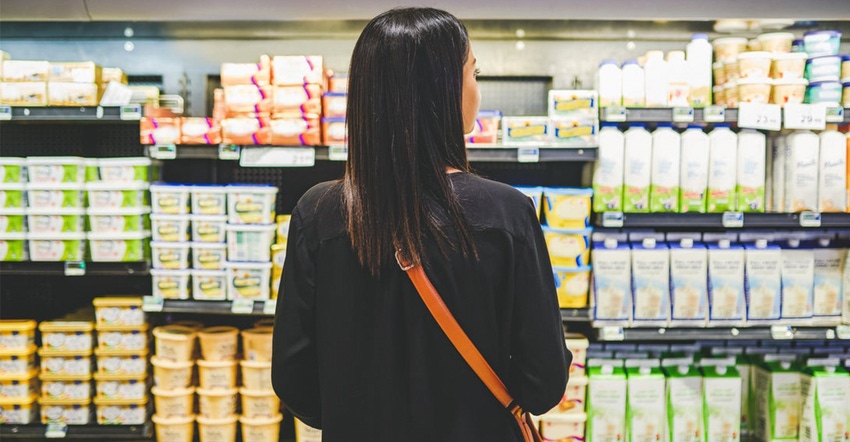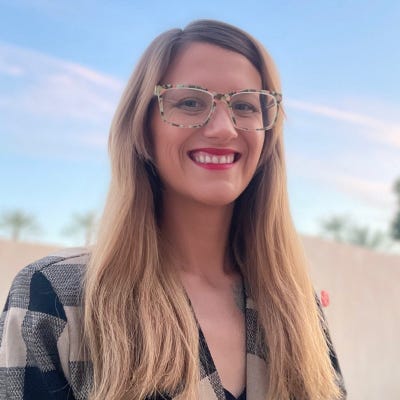What's Next for Extended Producer Responsibility - An Update from Colorado: Part 2
The basics of an extended producer responsibility (EPR) program are broad, leaving room for a spectrum of structures depending upon what is needed on a state-by-state basis, according to Resa Dimino, managing partner at SignalFire Group and managing principal at Resource Recycling Systems (RRS). Dimino brought more than a decade of experience in EPR to the 2022 Summit for Recycling in Colorado, a state that passed legislation (HB 22-1355) in June 2022. She walked through the basics of an EPR program, which begins with the legislation.

The basics of an extended producer responsibility (EPR) program are broad, leaving room for a spectrum of structures depending upon what is needed on a state-by-state basis, according to Resa Dimino, managing partner at SignalFire Group and managing principal at Resource Recycling Systems (RRS).
Dimino brought more than a decade of experience in EPR to the 2022 Summit for Recycling in Colorado, a state that passed legislation (HB 22-1355) in June 2022. She walked through the basics of an EPR program, which begins with the legislation.
"You need that legislation to be clear about who's responsible for what, and who is accountable for what elements of the program," she explained. "They're also best structured if they include some performance standards. And those performance standards can be rates and dates you need to recycle x by y date, but it also can be service standards."
The Foundation
It's crucial for the structure of an EPR program to develop reliable, convenient collections for packaging or other materials. Dimino pointed out access to a certain percentage of a population within a living radius, such as current programs for paint.
"This kind of performance standard can take a lot of different forms, but what is really important is that the statute that sets that kind of responsibility and then establishes the oversight," Dimino explained.
How is the state going to oversee the program? Is there a need for an oversight or advisory group? What is needed to ensure the program is successful? These are the types of questions legislators need to consider while setting the structure.
Once it is created, a producer responsibility organization can be established to help brands and manufacturers meet obligations.
"The producer responsibility organization essentially collects money from the producers and then distributes that money to the people who are going to deliver the programs. So, it's that sort of central organization that manages the recycling system," Diminio said.
One of the big challenges in recycling is that it is a supply chain, but it is currently "disjointed." However, producer responsibility legislation (PRL) can be drafted to mend the holes in the system.
"It has a bunch of individual actors who are doing different things for different reasons, and what PRL can do is create that central organizing figure that interacts with everybody in that supply chain to make sure that people are talking to each other so that the supply chain is working and delivering effective programs to consumers and materials to the system," she explained.
The program plan works as the blueprint for how producers will operate with the new legislation, how it is going to be implemented and what recyclables are going to be collected. It also outlines processing, marketing and education programs. A focus on end-market development is needed as well.
Dimino correlated the information to the context of Colorado's new EPR measures. Now that legislation has been passed and signed, the state is poised to begin a needs assessment regarding the specific investments required throughout the recycling supply chain to meet end goals. This can determine the need for additional MRFs and transfer stations and what capabilities are lacking to bolster state rates.
"The important piece of the program plan to is stakeholder engagement and approval by a state agency and to have that oversight," Dimino commented, "because it is really important that there is transparency in the system which is provided through the plan and also accountability which is provided through that public review."
Colorado's HB 22-1355 is the "most conventional" legislation that has passed to date, which means that the rest of the country is observing the implementation process, she added.
Speaking to attendees, Dimino comment that, "In some ways you have a path before you because [HB 12-3355] is following the model of the Canadian systems and the European systems in that way. But it's going to be a little bit different than some of your colleagues in other states. You're going to be the first out of the gate - if you were not first to pass = but you are going to be the first to have to form a PRL."
Supply Chain Constraints
So, what does this mean for those involved within Colorado's recycling supply chain?
Currently, producers are putting materials into the market, and demand is strong for those materials as those same producers seek to transition their packaging to contain recycled content. However, nothing can be done to influence the supply of those materials.
"They can't make you make the decision of what to put in your bin. They can't make your municipality provide you a bin so they really don't have the way to sort of close that loop," she said.
Consumers might not have access to easy recycling and have to pay for it through taxes or fees, and they also might not have the education needed to know what to put in their bins.
Haulers and collectors currently cannot consistently provide recycling-related services because the economics don't necessarily work for them, leading them to pass on the costs to consumers. However, it is not a sustainable way to finance reliable recycling in muncipalities.
Dimino went on to describe the diversity of materials MRFs receive from different programs and how variation of processing among each entity. As a result, issues with contamination lead to significant yield loss for MRFs, and, in addition, reclaimers. This leads back to the supply constraint for producers who wanted to purchase recycled materials for packaging and other products.
"And the reclaimers are like this is all we got right? So, they are constrained in the way that they are not able to influence supply and are really financially vulnerable," she explained. "The reclaimer is the one of us to buy the bales from the MRF, and those prices go up because there's not enough material to feed this demand. They have to pay that high bail price, but the producer may not want to pay more for that recycled material so they can get caught in a really financially vulnerable position in a pinch there where there's really not enough margin even though there's high demand for their product. There's not enough margin because of that supply constraints."
Implementation
With the passage of HB 22-1355, consumers' ease of access to recycling, just as easy as throwing something out, Dimino commented.
Clear and consistent communication about materials and where to recycle them will be available. In addition, residents moving from one city to another will be able to recycle the same materials no matter their location because of the consistency created.
Business opportunities are abound for haulers and collectors.
"I know that folks in this sector are often concerned about the impacts of EPR on their system, largely because they may have to change who they contract with," she explained. "It may be that instead of contracting with their customer directly or their municipality, they have to contract with the PRL to provide the service, but it is the opportunity to provide a lot more service because there's going to be recycling service statewide now."
MRF operators will benefit from the larger systemic impacts as contamination falls and a more steady supply of materials becomes available, no matter the contract they sign. Most significantly, MRFs now will have resources as the PRL invests in infrastructure to ensure materials are handled and sorted properly.
Reclaimers also stand to benefit from Colorado's EPR legislation for the same reasons: more material, better quality, less contamination and more resources.
Colorado's EPR program puts producers at the center of system as they pay fees and take responsibility for achieving program goals.
"They'll be able to have influence on whether their products and packages are deemed to be recyclable because they'll be able to help design the collection and processing system to recover that material," Dimino said. "And they'll have more material available to meet their recycled content goals and the recycled content mandates that they're facing now in a number of states."
Lastly, municipalities now will have the choice to provide recycling services or take the resources and dollars put into curbside and other recycling programs into areas such as organics and composting.
Speaking to those within municipalities, Dimino said: "Do you want to take those resources you were putting into curbside recycling or your recycling program and maybe put those into organics and let the PRL take over it, or do you want to continue to provide that service to your residents and get reimbursed? You now have that choice and those options. And no matter what which of those choices you make, you are assured that you'll get better service for your residents moving forward and that you'll be a part of this consistent program. So, at the end of the day, this coordination, this overarching, coordinating entity that EPR provides is going to lead to better results."
Editor's Note: This is the second part of a two-part series providing an EPR update from Recycle Colorado's Summit for Recycling conference which was held August 22 - 24, 2022. Part 1 discussed the necessity and structure of EPR programs. Part 2 dives into EPR programming and what could mean for recycling in the state of Colorado.
About the Author(s)
You May Also Like




